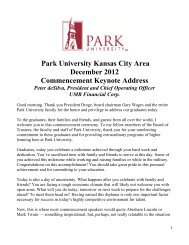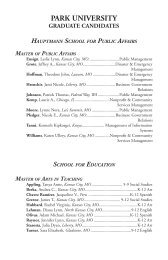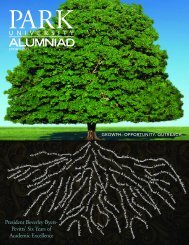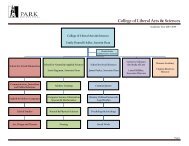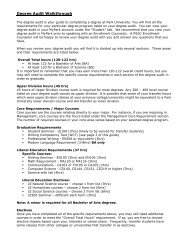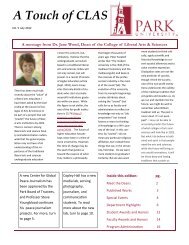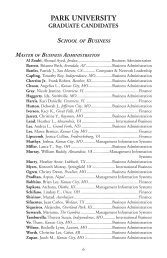How to Write a Radio Serial Drama for Social Development- PDF
How to Write a Radio Serial Drama for Social Development- PDF
How to Write a Radio Serial Drama for Social Development- PDF
You also want an ePaper? Increase the reach of your titles
YUMPU automatically turns print PDFs into web optimized ePapers that Google loves.
Chapter Eleven: Script Presentation 163<br />
Noting Technical In<strong>for</strong>mation in the Script<br />
There are no hard and fast rules about how <strong>to</strong> word technical instructions<br />
about sound effects, music, and the like. Many radio direc<strong>to</strong>rs have their own<br />
preferences <strong>for</strong> how these details should be indicated, so the writer might<br />
want <strong>to</strong> consult the direc<strong>to</strong>r on this question. Perhaps the best rule is <strong>to</strong> keep<br />
the instructions simple and clear. The following directions are generally<br />
acceptable <strong>to</strong> most direc<strong>to</strong>rs in most cultures.<br />
Direction<br />
Meaning<br />
1. MUSIC. FADE UP<br />
2. MUSIC UP :10. CUT<br />
3. MUSIC UP :05. FADE UNDER AND HOLD<br />
4. MUSIC :05. FADE UNDER AND OUT<br />
5. MUSIC UP :05. CROSS FADE TO<br />
6. FX. CHICKENS CLUCKING<br />
7. FX. TRUMPETS AT DISTANCE :03<br />
BRING IN RAPIDLY. HOLD UP :03. CUT<br />
8. CUT IN TAPE EP#23. PAGE 5. LINES 4 - 12,<br />
JOHN: “Today is my birthday”...<strong>to</strong>...MAVIS:<br />
“You’d better come home early.”<br />
9. FX. SCHOOL PLAYGROUND SOUND BED<br />
THROUGH SCENE.<br />
10. FX. COWS MOOING. OCCASIONAL.<br />
THROUGHOUT SCENE.<br />
11. MUSIC. FADE UP THEME MUSIC<br />
THROUGH FINAL SPEECH. THEN UP TO<br />
END.<br />
Start with the music very soft and gradually raise the<br />
volume.<br />
Start with the music at full volume. Let it run <strong>for</strong> ten<br />
seconds. Then cut (s<strong>to</strong>p) it.<br />
Start with the music at full volume. Let it run <strong>for</strong> five<br />
seconds, then fade it down <strong>to</strong> a low level and keep it<br />
playing under the dialogue that follows.<br />
Let the music play <strong>for</strong> five seconds. Then fade the<br />
volume down <strong>for</strong> a few seconds, and then cut (s<strong>to</strong>p) it<br />
al<strong>to</strong>gether.<br />
Play the music alone <strong>for</strong> five seconds. Then gradually<br />
lower the volume of the music and, at the same time,<br />
begin the sound effect of the chickens softly and<br />
increase its volume. Once the chicken sound effect is<br />
established, the music should be cut completely.<br />
The trumpet sound should be heard quietly (as if in<br />
the distance) <strong>for</strong> three seconds. Then the volume<br />
should be raised rapidly and held at <strong>to</strong>p volume <strong>for</strong><br />
three seconds, and abruptly cut (s<strong>to</strong>pped).<br />
Include a segment of the previously recorded episode<br />
number 23, as indicated by the page and line<br />
numbers and the speech cues.<br />
The sounds of a school playground should be played<br />
softly in the background through out the scene. The<br />
dialogue is heard over it.<br />
The sound of cows mooing should be played softly<br />
several times throughout the scene.<br />
Bring the closing music in quietly under the<br />
announcer’s voice during the closing remarks of the<br />
program. When the announcer finishes, bring the<br />
music up loudly <strong>to</strong> end the program.<br />
11




